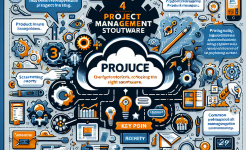Concept Stage
The concept stage is the starting point of the IPD product development process. It is here that the initial ideas for a new product are generated. This involves a deep understanding of market needs, technological trends, and competitive landscapes. Market research is conducted to identify unmet customer needs, which could range from improving existing product features to creating entirely new product categories. Technological trends are also closely monitored to see how emerging technologies can be incorporated into the new product concept. For example, in the smartphone industry, the trend of 5G technology has led to the development of new smartphones with enhanced connectivity features.
During this stage, cross-functional teams come together. Members from marketing, engineering, R&D, and other departments collaborate to brainstorm ideas. Their diverse perspectives contribute to the creation of a well-rounded product concept. Marketing professionals can provide insights into customer preferences and market demands, while engineers can assess the technical feasibility of the ideas. This collaborative effort helps in formulating a product concept that not only meets market needs but is also technically and commercially viable.
Finally, a business case is developed. This includes an analysis of the potential market size, expected revenue, and costs associated with the product. The business case serves as a crucial document to justify the further investment in the product development process. It helps management make informed decisions about whether to proceed with the product concept or not. A well-prepared business case can also attract external investors if needed.
Planning Stage
Once the product concept has been approved, the planning stage kicks in. This stage focuses on creating a detailed roadmap for the product development. It starts with setting clear product goals and objectives. These goals should be specific, measurable, achievable, relevant, and time-bound (SMART). For instance, a product goal could be to develop a new laptop with a battery life of at least 10 hours, a weight of less than 2 kg, and to be launched within 12 months.
In the planning stage, a detailed project plan is developed. This plan outlines all the tasks, milestones, and dependencies involved in the product development. It assigns responsibilities to different team members and sets deadlines for each task. A Gantt chart is often used to visually represent the project plan, making it easier for everyone to understand the timeline and progress of the project. For example, the tasks could include design development, component sourcing, software programming, and testing, each with its own start and end dates.
Resource allocation is also a critical aspect of the planning stage. This involves determining the necessary human resources, such as the number of engineers, designers, and testers required. It also includes allocating financial resources for activities like research, development, and marketing. Adequate resource allocation ensures that the project has the necessary support to move forward smoothly and meet the set deadlines.
Development Stage
The development stage is where the actual product takes shape. It begins with the design phase. Product designers work closely with engineers to create a detailed design that meets the product goals. This includes both the external design, such as the aesthetics and form factor of the product, and the internal design, which focuses on the layout of components and the overall architecture. For example, in the design of a new car, designers need to consider factors like aerodynamics, ergonomics, and safety while creating an appealing exterior.

During the development stage, the product is built and tested. Prototypes are created to test the functionality and performance of the product. These prototypes can be physical models or virtual simulations, depending on the nature of the product. For instance, in the development of a new software application, a beta version is often released for internal and external testing. Testers provide feedback on bugs, usability issues, and performance problems, which are then addressed by the development team.
Continuous communication and collaboration among different teams are essential during this stage. The R&D team, manufacturing team, and quality control team need to work together seamlessly. The R&D team may need to make adjustments to the product design based on manufacturing feasibility, while the quality control team ensures that the product meets the required quality standards. This cross-functional collaboration helps in ensuring that the product is developed efficiently and to a high quality.
Verification Stage
The verification stage is all about ensuring that the product meets the defined requirements. It starts with a comprehensive review of the product design and development process. This review checks whether all the design specifications have been met and if the product development has followed the planned procedures. For example, in the aerospace industry, a rigorous review is conducted to ensure that an aircraft design meets safety and performance regulations.
Testing is a major part of the verification stage. Different types of tests are carried out, including functional testing, performance testing, reliability testing, and usability testing. Functional testing checks whether the product performs all its intended functions correctly. Performance testing measures the product's speed, capacity, and other performance metrics. Reliability testing assesses the product's ability to perform consistently over time under various conditions. Usability testing evaluates how easy it is for users to interact with the product.
Based on the test results, any necessary corrective actions are taken. If the product fails to meet certain requirements, the development team goes back to the drawing board to make improvements. This iterative process continues until the product passes all the verification tests and is deemed ready for the next stage. The verification stage is crucial as it helps in identifying and rectifying any issues before the product is released to the market.
Launch and Lifecycle Management Stage
The launch and lifecycle management stage marks the introduction of the product to the market. A well-planned marketing and launch strategy is essential. This includes creating awareness about the product through various channels such as advertising, social media, and public relations. The marketing team also needs to position the product effectively in the market, highlighting its unique selling points. For example, when a new smartphone is launched, marketing campaigns focus on features like a high-resolution camera, fast processing speed, and long battery life.
Once the product is launched, post-launch support is provided. This includes customer service, product updates, and maintenance. Customer service teams are available to address any queries or issues that customers may have. Product updates are released to fix bugs, add new features, and improve performance. Maintenance services ensure that the product continues to function properly over time.
Finally, lifecycle management involves monitoring the product's performance in the market. Sales data, customer feedback, and market trends are analyzed to determine the product's success. If the product is not performing as expected, strategies may be adjusted, such as reducing prices, improving marketing efforts, or even discontinuing the product. On the other hand, if the product is successful, further enhancements and expansions may be planned to extend its lifecycle.
In conclusion, the IPD product development process is a complex yet highly effective approach. The five key stages - concept, planning, development, verification, and launch and lifecycle management - are all interconnected and crucial for the successful development and market introduction of a product. Each stage has its own set of activities and challenges, but when executed properly, they lead to the creation of products that meet or exceed customer expectations, are competitive in the market, and contribute to the long-term success of the company. By understanding and effectively managing these stages, companies can improve their product development efficiency, reduce time to market, and increase the likelihood of product success. This structured approach also enables better collaboration among different departments, leading to a more holistic and integrated product development process. Overall, the IPD product development process is a valuable framework that can help companies thrive in today's dynamic and competitive business environment.
ARTICLE TITLE :Analysis of the five key stages of the IPD product development process ,AUTHOR :ITpmlib

















